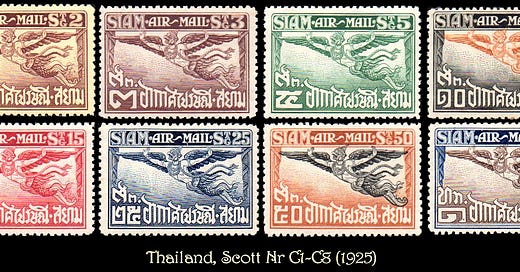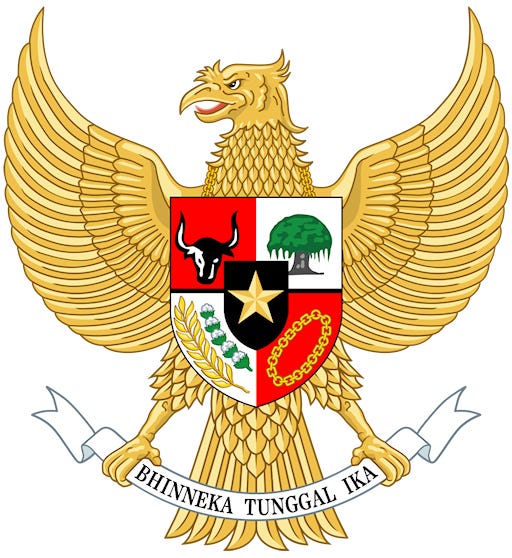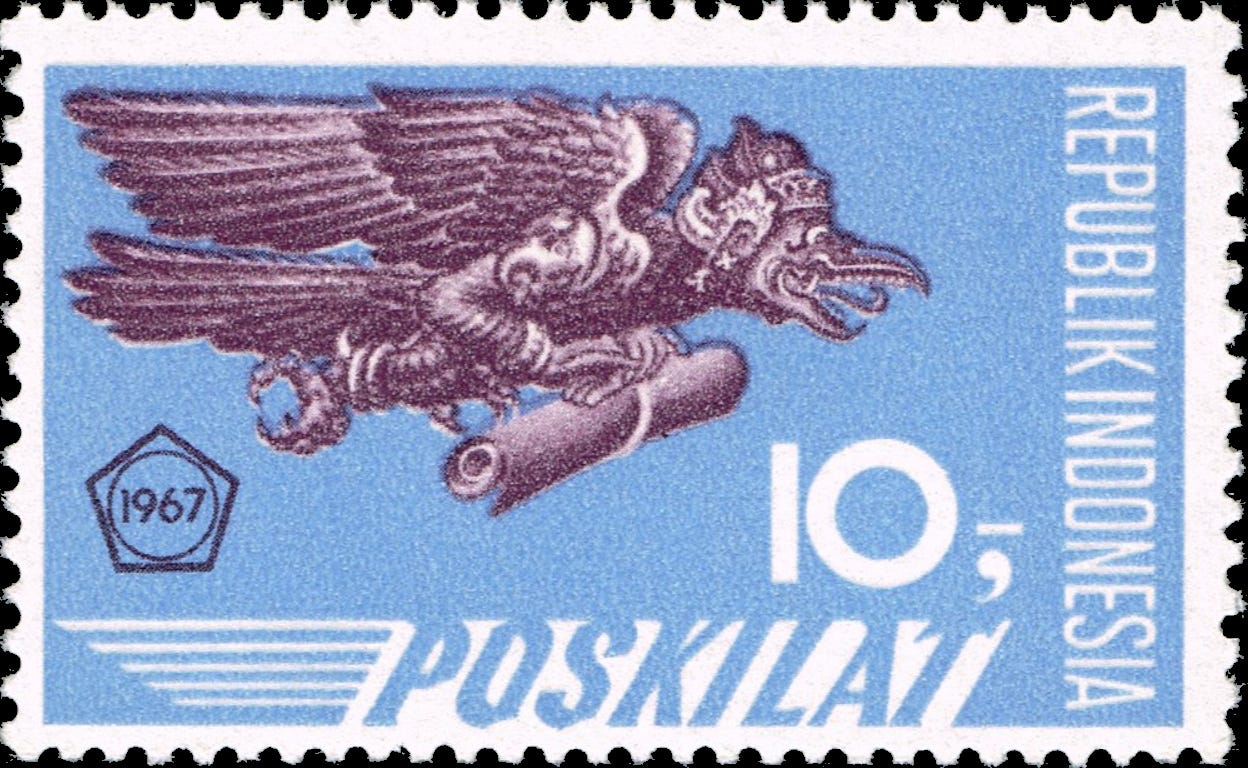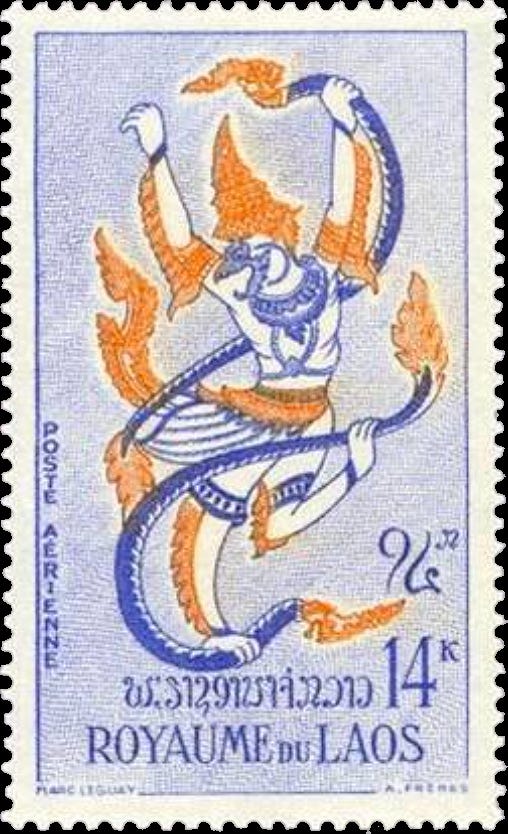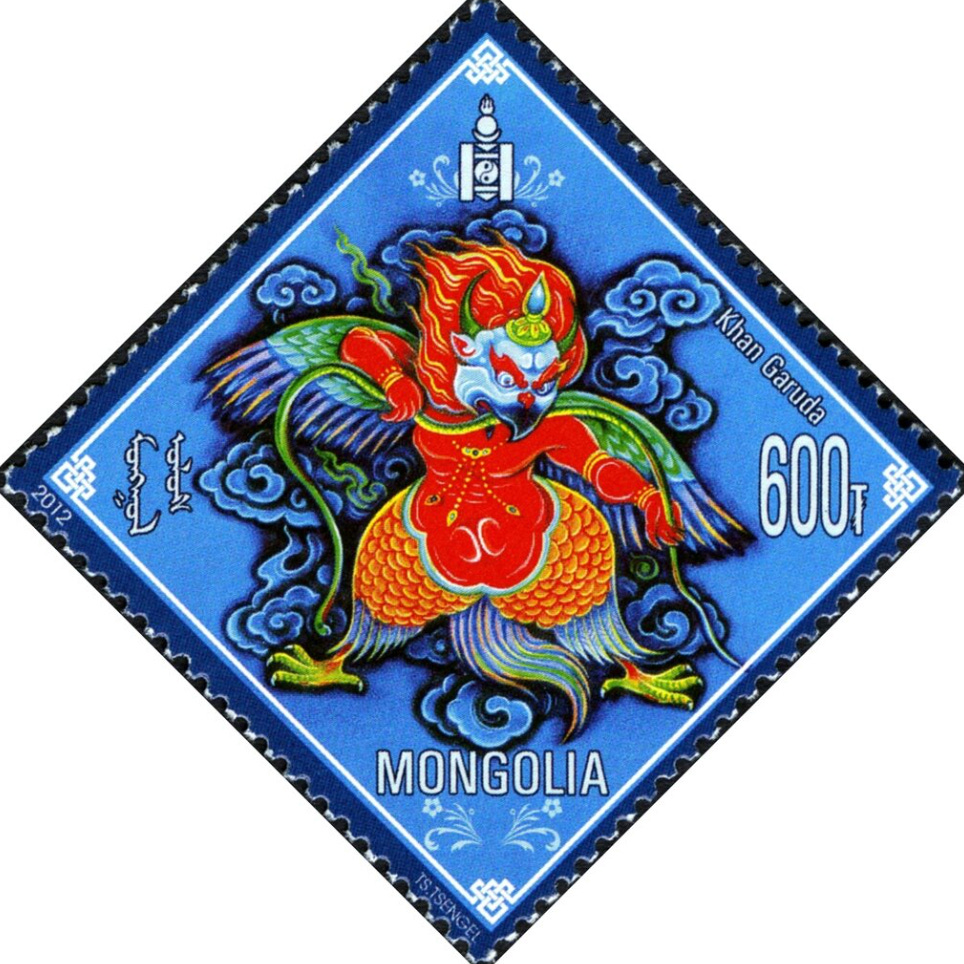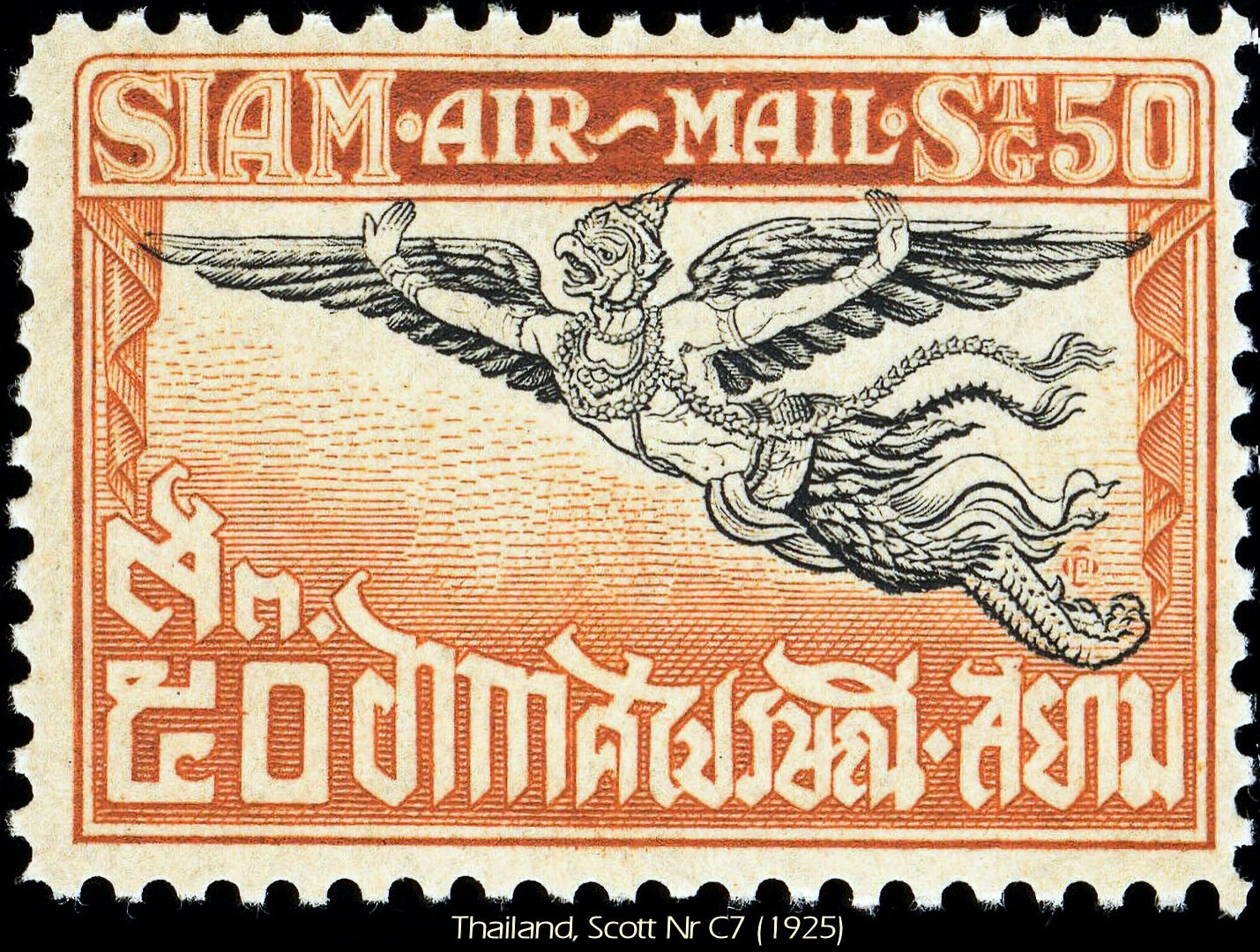This is a set of stamps I learned about only recently. I am not a Thailand collector, but while browsing aimlessly, these stamps caught my eye. What a stunning design.
The design features a mythical creature called the Garuda, a Hindu deity usually depicted as the mount of Vishnu. The Garuda also figures into Buddhism and Jainism. Garuda has the power to swiftly travel anywhere and is the enemy of every serpent.
Besides Thailand, the Garuda appears in the mythology of other Asian countries, such as Cambodia, Indonesia, Laos, and Mongolia. The Garuda is the main design element of the coat of arms of Indonesia (above), and India utilizes it on the insignia of the Brigade of the Guards (below). It has also been adopted, In more stylized designs, as commercial logos (below).
These countries have also utilized the Garuda in the designs of some of their stamp issues.
Cambodia, Scott Nr C11 (1962)
Indonesia, Scott Nr E1H (1967)
Laos, Scott Nr C40 (1962)
Mongolia, Scott Nr 2745 (2012)
In Thailand, the Garuda has stood as the symbol of royalty for hundreds of years, and in 1911 was officially adopted as the national emblem.
And, while Thailand is not unique in their adoption of Garuda for their postage stamps, they did create, I believe, the most spectacular design with it.
This was for their first airmail issue, released in 1925, when Thailand, as can be seen on the inscription, was still known as Siam.
It is an engraved stamp, which adds to the beauty of the design, and was printed by Waterlow and Sons, of Great Britain.
The set was reprinted and released again in 1930, though as a set of six, omitting the 3 satang brown and the 1 baht blue and brown. The design and colors are exactly the same, the only difference being that the new set came in perf gauge 12 ½ vs the 1st issue’s perf 14.
While complete sets of C1-8 in used condition are easy to find, mint sets are another matter. A search of HipStamp showed 9 complete sets available in Used condition, compared to only 3 for sets in Unused condition – none in MNH. Partial sets and singles are plentiful. However, if you are looking to purchase any of these stamps, be careful you don’t overpay. I’m not sure when the values changed, but between my 2017 and 2024 Scott Catalogues, values for the complete set have dropped by about 25%, with some individual stamps faring even worse, as seen here:
C1-8 Unused complete set: 2017 $192.50 – 2024 $146.50
C1 and C2 Unused: 2017 $8.00 each – 2024 $2.25 each
C7 Unused: 2017 $60 – 2024 $40
C5 was the only one that bucked the trend, increasing in CV, from $8.00 Unused to $18.50.
The 1930 set of 6, C9-14, suffered a similar fate. The complete set catalogs at about 1/3 the value of C1-6, though individual stamps can be of higher or lower value than their 1st issue counterparts.
This set is a perfect example of why I find it so hard to specialize in one country or area. A beautiful set, such as this one, will find its way into my collection, even if it ends up being the only example of that country.

